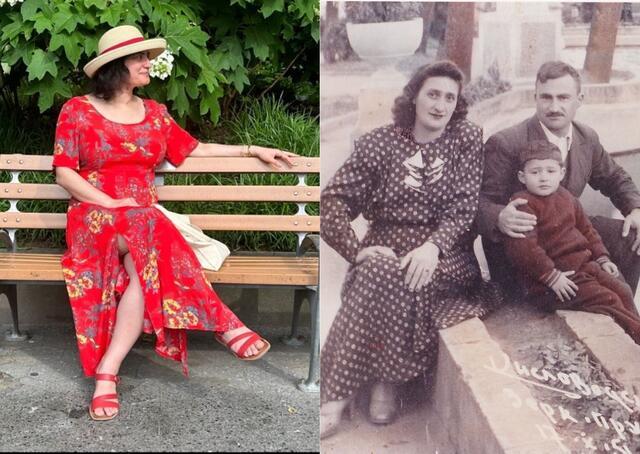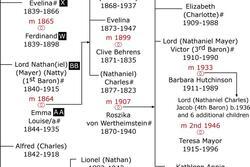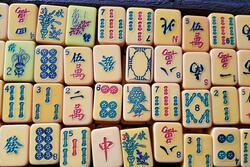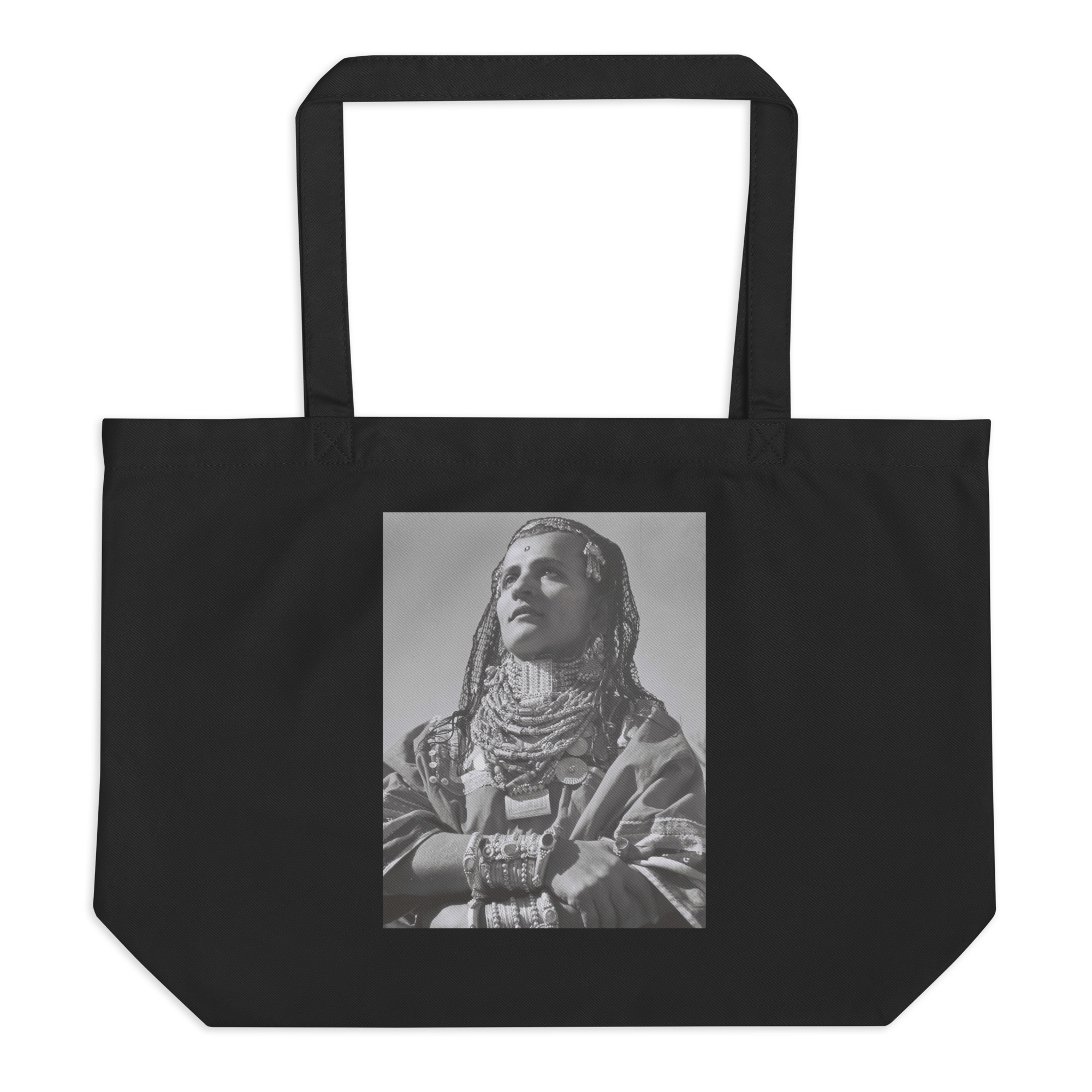The Jewish Girl's Guide to Genealogy
With greater access to historical records and the advent of DNA testing, there’s been a significant rise in people interested in learning about their family history. Sometimes, people are looking for answers to specific questions, such as what life was like for a relative in a particular time and place. Other times, they just want to build out a basic family tree.
When you’re first starting your genealogy journey, it can be difficult to know where to begin, who to talk to, and how to keep yourself organized. There are many resources out there, including all kinds of books, articles, and consultants—the amount of information is overwhelming. But the most important thing to remember is that it doesn’t matter where you start. It could be anything—a photo, a conversation, or a census record.
In my previous piece for JWA, I talked about my passion for understanding my Mountain Jewish roots and traditions. I’m lucky that both my parents are still living and have always been incredibly generous in sharing family stories. As I’ve gotten older, I’ve started documenting and organizing information, and asking a lot of questions.
Below, I’ve outlined a few tools and things to think about that I’ve found helpful in my own journey.
Happy sleuthing!
The Family Historian
In many families, there are a couple of people who are the unofficial family historians or who know the most stories. If you have people like that in your family, having conversations with them is a good place to start. For me, that person is my dad. He, in turn, learned a lot from his mom and other older members of his family.
I suggest coming to the conversation with a set of questions and a way to record the information. If the person is comfortable, the best thing to do is to record their voice and/or make a video recording. This way, you can listen back to the conversation, and the recording itself then becomes a historical record of sorts.
Below are a few examples of standard questions you can ask:
- If there’s no written family tree, ask them how many generations they know about. For each generation, ask for names, birth years, birthplaces, etc.
- Ask about what people did for a living, what their personalities were like, what their hobbies were, etc.
- Ask if anyone in the family has visited ancestral towns and if they have any connections there. This is important to know in case you’re interested in visiting those places.
- If certain family members moved to different towns or countries, ask why. For example, my family went through two big migrations: one around 1920 (from a village in the Caucasus Mountains to Baku, Azerbaijan) and another in the 1980s and 1990s (from Baku to several countries including the US, Germany, and Canada).
- Are there any family mysteries? For example, someone who cut ties with the family or someone whose cause of death remains unclear. Make a note of these for later research.
There’s no such thing as a question that’s too small or insignificant, so don’t be shy to ask anything that you’re curious about. Also, sometimes, the most interesting information comes up in casual conversation over dinner or while running errands. For example, I was hanging out in the kitchen with my dad many years ago, and he mentioned that neither of his grandmothers knew how to read. I was initially shocked. It had never even crossed my mind to ask him about women’s literacy. In our community, the thinking at the time (in the late 1800s) was that women didn’t need to know how to read because they were not supposed to work outside the home.
Unfortunately, the decision not to formally educate women happened in many communities at the time, both Jewish and non-Jewish. This is part of the reason we know so much less about women’s lives in certain communities and why it’s important to document whatever we do know.
Preserving Photos
Photos can provide a wealth of unexpected information. In fact, sometimes seeing particular photos triggers long-forgotten memories. Sit down with the photos your family has and see who you already know and who you need to ask about. Besides asking about names, it’s also helpful to ask about the approximate date the photo was taken, where it was taken, what the occasion was, etc. Also, ask around to see what photos other relatives may have.
You might hit a wall at some point as you’re looking for older photos, since many Jews lived in rural areas and may not have had access to a photographer until moving to a big city. Also, photos may have been lost or damaged during the mass migration of Jewish communities that has happened over the last 100+ years.
But you may be surprised by how far back you can go. For example, the oldest photos I have of my family right now are from the late 1920s, but I only discovered them (including the one above) in the last year. The photo above is the only one we have of my grandmother as a child, and it was so emotional to see it for the first time.
Also, scan as many photos as you can because photos are fragile, and it’s always a good idea to have multiple copies. This also makes it easier to share photos with other family members, upload them into digital family trees, etc. There are also services that will colorize old photos, which can really bring memories to life.
The Search for Records
One of the most rewarding parts of learning more about your genealogy is the treasure hunt of looking through different kinds of archives. We’re lucky to live in a time in which many records have been digitized and translated. You never know what you’re going to find.
Here are some resources to get you started, but these represent only the very tip of the iceberg:
US Census Records: This is a great place to start because these documents provide a wealth of information that can serve as a springboard for further searches. The National Archives links to resources that store census records from 1790 to 1950.
Military Records: There are several places to look for military records, but I’ll mention one that is relevant for Soviet Jews. If you had family members who lived in the Soviet Union and served in World War II, it’s likely that you’ll find them in this database called “Memory of the People.” The website is in Russian, but Google Translate works well to translate records into English. I’ve found records for two of my great-uncles here.
Newspapers: There are several websites that have digitized copies of newspapers, including the Library of Congress. I was able to find an article one of my dad’s uncles wrote for the Soviet newspaper Pravda in the 1960s, which gave us all goosebumps.
Yad Vashem: If you have family members who died during the Holocaust, this is a good resource for records. You can also submit information about a relative.
Library Collections: Libraries have access to a wealth of records that you may otherwise have to pay for, so get in touch and see what they have available. For example, the Dorot Jewish Division of the New York Public Library has an extensive research collection and offers classes on genealogy and consultations with librarians.
The Family Tree
There are several websites that can help you build a family tree. Probably the best known of these is Ancestry.com. That’s where I decided to build a tree when I was 15 years old. I’ve worked on it on and off for almost twenty years now, and it’s been so fulfilling to watch it grow as I learn more.
The great thing about Ancestry.com is that you can upload different kinds of documents and photographs for each relative, so you can build out a comprehensive repository in one place. I also like to add interesting facts, such as how my great-grandfather worked on a farm when he was just nine years old, or the explanations behind why a particular cousin had multiple names.
If you go back far enough in building your family tree, you’ll realize that Jews didn’t traditionally have surnames. You would be known as "Moses son of Joseph" or "Zippora daughter of Akiva." In our family, my great-grandfather created our last name (Nisanov) from his father’s name, Nisan, after the Soviet Union required all of its citizens to have last names. When we became US citizens, my dad decided to shorten our last name to Nissan to honor our ancestor. (He added an extra “s.”) Because children were often known by their father’s name, the mother’s name could easily be lost if not documented. So you might end up knowing the names of multiple great-grandfathers, but none of the wives’ or mothers’ names.
Pictured below are my paternal grandmother and I showing that a love for beautiful dresses might be hereditary. And fun fact: my dad (who was four years old when this photo was taken) remembers that her dress was red, too!








